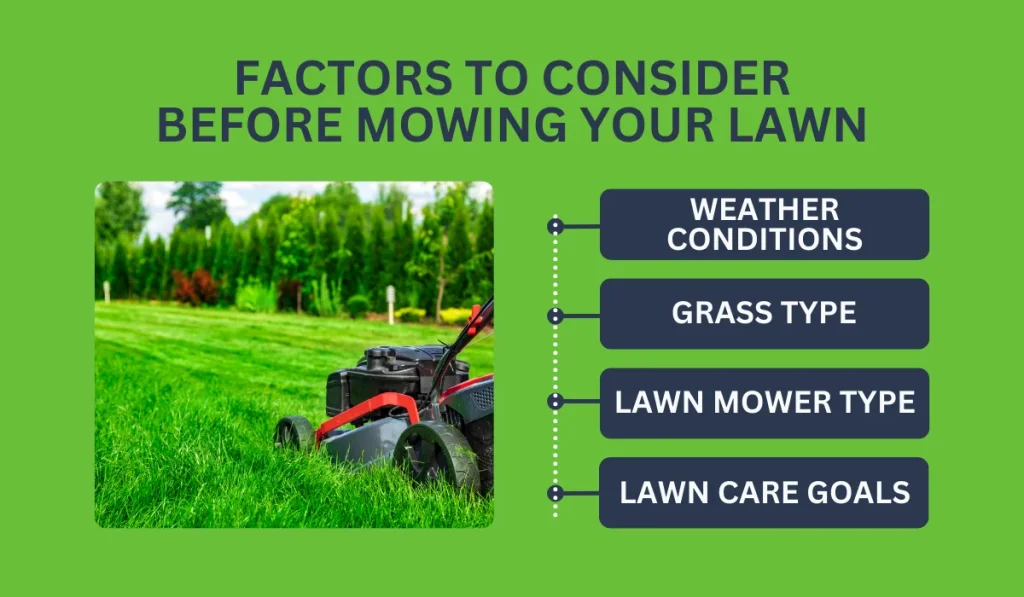Did you know mowing your lawn at night can lead to fungal issues? The time of day you cut the grass affects its health and appearance, making it an important consideration.
The best time of day to cut grass is typically in the mid-morning due to cooler temperatures and reduced moisture. Keep reading to learn more about how to optimize your cutting schedule.
Key Takeaways
- The best time to mow your lawn is mid-morning, between 8 a.m. and 10 a.m. when the grass is dry but not overly hot.
- Mowing in the evening may lead to fungal issues since the grass may not have enough time to dry before nightfall.
- Lawn care companies can offer expert mowing services when homeowners are short on time.
When Should You Mow Your Lawn for the Best Results?
As a general rule for a healthy lawn, the ideal time to mow your lawn is mid-morning, ideally between 8 a.m. and 10 a.m. During this time, the grass has had time to dry from the morning dew, but the day hasn’t heated up too much.
Morning Mowing
Early risers may find the morning an excellent time for mowing, but we recommend waiting until mid-morning. In the early morning, the grass is still wet from morning dew. This can cause clumping.
The mid-morning window provides an ideal balance after the dew has mostly evaporated. The grass still retains moisture, preventing excessive stress from cutting. It allows for better aeration and promotes healthier roots.
Avoid Evening Mowing
In the evening, temperatures cool down, which might lead you to think that this is a good time to mow your lawn.
However, without enough time for grass to dry before nightfall, there’s a greater chance of fungi development. If choosing to mow in the evening, ensure adequate natural or artificial light, and be cautious of dew forming as the temperature drops.
Factors to Consider Before Mowing Your Lawn

Weather Conditions
Weather affects how and when a lawn can be mowed. Mowing wet grass is generally not advisable because it can clump and clog mower blades.
Early mornings might seem ideal, but dew on the grass can create similar issues. Too much moisture can lead to fungal infections, especially during warmer months.
Grass Type
Different grass types have varied mowing needs, such as grass heights. Warm-season grasses like Bermuda or Zoysia might need cutting when temperatures rise. In contrast, cool-season grasses, like fescue, may need mowing during more moderate times of the day.
Lawn Mower Type
The type of mower you use directly affects how and when you should mow. Manual push mowers are ideal for small yards, while motorized options can cover larger areas. Equally important is having sharp mower blades.
Dull blades tear the grass rather than cutting it cleanly, increasing the risk of scalping (cutting too close to the roots).
Lawn Care Goals
Lawn care goals define mowing strategies. For those overseeding or aiming for thick, lush grass, following the optimal times can help support healthier growth and grassroots development.
Frequently Asked Questions
When’s the worst time to go out and mow your lawn?
Midday can be tough on your lawn. The sun is at its peak, increasing stress on the grass and making it more prone to damage.
Should I wait to mow the lawn until after the rain stops?
It’s best to wait until the grass dries. Mowing a wet lawn leads to uneven cuts and clumps that can suffocate the grass. Waiting a day after rain allows for cleaner cuts and easier collection of clippings.



